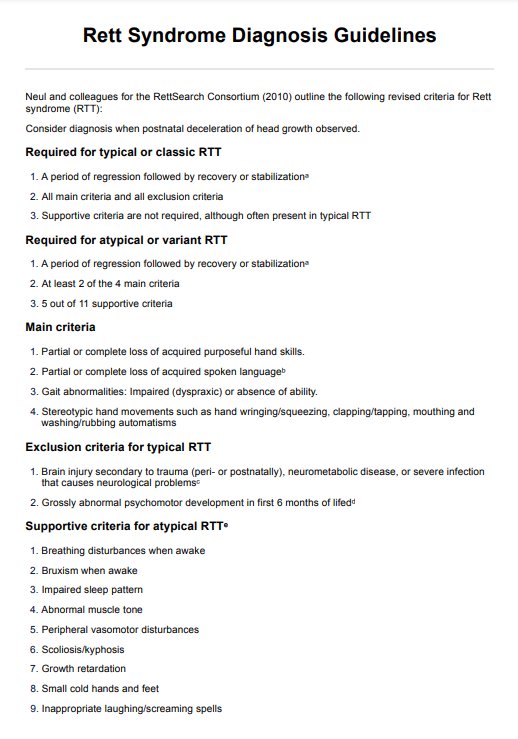Rett syndrome is typically diagnosed between the ages of 6 months and 2 years, following a period of normal development. The diagnosis often occurs when developmental regression and characteristic symptoms, such as loss of speech and repetitive hand movements, become apparent.

Rett Syndrome Diagnosis Guidelines
Discover comprehensive guidelines and examples for diagnosing Rett Syndrome. Download Carepatron's free PDF for insights and information.
Rett Syndrome Diagnosis Guidelines Template
Commonly asked questions
Children with Rett syndrome may exhibit distinctive physical features, such as microcephaly (a smaller head size) and changes in posture and mobility. Additionally, they often display repetitive hand movements, such as hand-wringing, which are characteristic of the condition.
Testing for Rett syndrome primarily involves genetic testing to identify mutations in the MECP2 gene, which are responsible for most cases of the disorder. Additionally, healthcare professionals may conduct a thorough clinical evaluation, assessing developmental milestones and neurological status.
EHR and practice management software
Get started for free
*No credit card required
Free
$0/usd
Unlimited clients
Telehealth
1GB of storage
Client portal text
Automated billing and online payments











